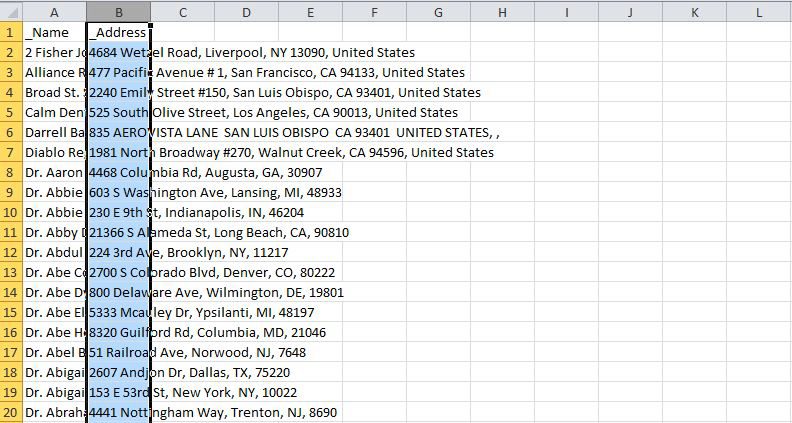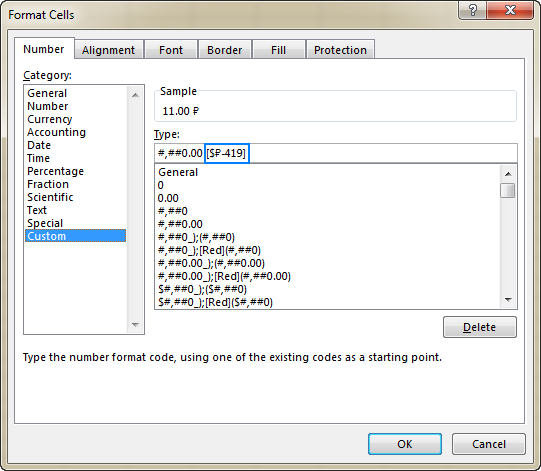

Which does format the cell, but instead of giving me my field formatted as a MAC address, I quite literally get the string:Īnd I can't seem to find what open office might take for a wild card so that I can get my cell formatted. So I tried giving it the format string of: Investigating further suggests that excel allows one step further of: Officially OO's documentation says these fields are: Looking around I've found that these formatting strings can be separated into sections with semicolons to get different formatting depending on the field content.
#Format cell for mac address in excel full#
If I go into Format -> Cells, I could do this if the field were just full of numbers (with format string #:#:#:#:#:#) but that doesn't work on text fields. I want these fields to display with MAC address formatting something like: 12:34:46:78:AB:CD.

I have a spreadsheet in open office, I have a bunch of fields that are all 12 character alphanumeric strings. Similar information is displayed when the cursor is in any of the other fields.Įnter in the lookup_value either by typing in the number for the cell, or, by selecting the cell on the worksheet.Įnter in the table_array by typing in the numbers for the cells, or, by selecting the group of cells on the worksheet.Įnter in the number for column which contains the data that you wish to obtain in the col_index_num area.Įnter into the range_lookup field the value TRUE if the function should accept the closest value to your lookup_value without going over or FALSE if an exact match is required.Ok, so I've been beating my head against the wall trying to get this one sorted out. If you put the cursor into the first line for lookup_value, down below it explains what the lookup_value is for your reference. The 4 values talked about above (lookup_value, table_array, col_index_num, range_lookup) are required by the function. The Function Wizard for VLOOKUP will then display.
:max_bytes(150000):strip_icc()/Formatting-Numbers-in-Excel-Using-Shortcut-Keys-1-5bf9fe12c9e77c005141dfb4.jpg)
Under the Function Name, select VLOOKUP, and hit OK. Under the Function Category, choose either All or Lookup & Reference. For Excel 2003 and earlier: Select Insert -> Function.For Excel 20: Go to the Formula tab on the ribbon, and choose Insert Function.Select the cell that will contain the answer to the VLOOKUP and access the Insert Function dialog, which depends upon the version of Excel that you are using:.To use the Function Wizard to insert a VLOOKUP function: Note, this requires that the column containing the lookup_value be formatted in ascending order. When set to FALSE, an exact match must be found to the lookup_value or the function will return #N/A. When set to TRUE, the lookup function gives the closest match to the lookup_value without going over the lookup_value. 3 is the column number of the data column for the ANSWER that you are trying to look up. If your table is set up as: column 1 - Student ID Number, column 2 - Student Names, column 3 - Grades and you inputted a Student ID Number and you want to retrieve the grade that was received for that person, the col_index_num would be 3. The col_index_num is the column of data that contains the answer that you want. Back to the example, the table_array would not only include the Student ID number column, but the columns for the Student Names and Grades as well. This includes not only the column being searched on, but the data columns for which you are going to get the values that you need. The table_array is the area of cells in which the table is located. If you are searching a table by the Student ID number, then the lookup_value is the cell that contains the inputted Student ID number being looked up. This is the value that the function uses to search on. The format of the VLOOKUP function is: VLOOKUP(lookup_value,table_array,col_index_num,range_lookup). Then press Ctrl+Shift+Enter, or Cmd+Shift+Enter on Mac, and. HLOOKUP is the exact same function, but looks up data that has been formatted by rows instead of columns. Heres what a formula to filter by an account looks like. In the Student Record example, there would be a separate column of data for Student Names, one for Student ID numbers, etc. That is, all of the data is set up in columns and each column is responsible for one kind of data. VLOOKUP allows you to search a table that is set up vertically. If you have a table of Student ID numbers, Student Names and Grades, you can set up Excel so that if a Student ID number is supplied by the user, it will look through the table and output the student's name and grade. VLOOKUP and HLOOKUP are functions in Excel that allow you to search a table of data and based on what the user has supplied and give appropriate information from that table. HTML 5 Geolocation API which checks your network adapters MAC address. It can be used in all versions of Microsoft Excel. Next, translate the IP address to an IP number in decimal format to speed up the.
#Format cell for mac address in excel how to#
This document explains the functions of VLOOKUP and HLOOKUP and how to use them in a spreadsheet.


 0 kommentar(er)
0 kommentar(er)
